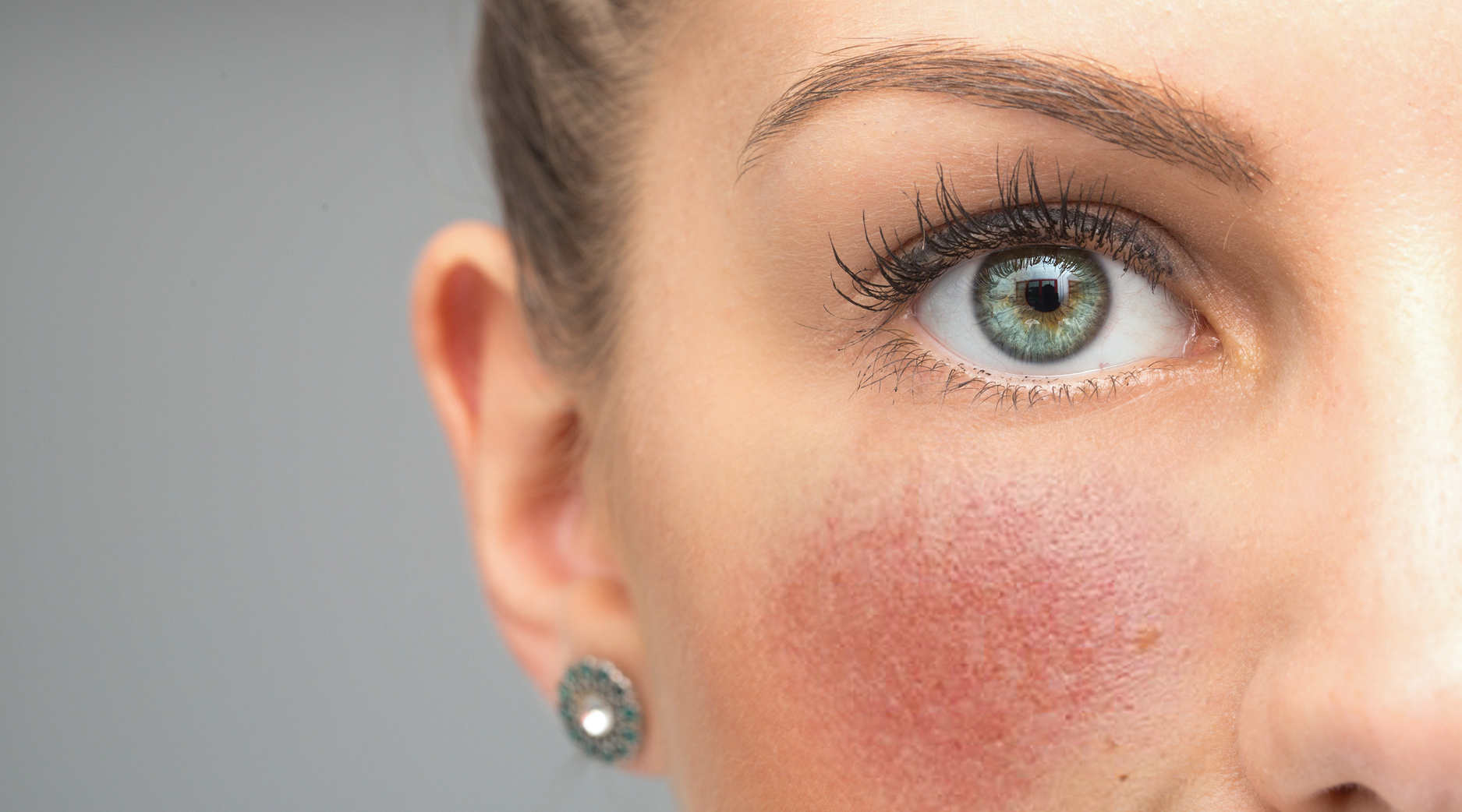Rosacea is a complex, chronic skin disorder that evolves and varies in severity and intensity amongst the millions of individuals it impacts. This condition is often misidentified as other dermatological issues such as acne or sunburn, complicating its diagnosis and management. Understanding rosacea’s distinctive signs is crucial for those experiencing unexplained facial redness and seeking appropriate treatment.
Remember though, it is manageable and you don’t have to suffer alone.
So, What Is Rosacea?
Rosacea is a multifaceted skin condition marked by chronic inflammation and vascular irregularities in the facial region. It presents with various symptoms, including persistent redness, swelling, and the development of papules and pustules that can resemble acne. The condition predominantly impacts the nose, cheeks, forehead, and chin, but can impact the ocular region as well.
Beyond the visible symptoms (which can be both painful, itchy, and irritating), rosacea can significantly affect quality of life — contributing to physical discomfort and psychological distress because of its visibility. Understanding and addressing the underlying inflammatory processes are essential steps in effectively managing rosacea and alleviating its impact.
The Many Faces of Rosacea
While common, the disorder is far from one-size-fits-all. The condition varies vastly in how and where it presents itself. Knowing what to look for and getting the correct diagnosis is half the battle: it will help you treat your rosacea effectively and specifically. There are 4 primary types of rosacea.
Erythematotelangiectatic Rosacea (ETR): Marked by persistent redness and visible blood vessels, ETR resembles a lasting blush.
Papulopustular Rosacea: This type appears similar to acne but combines rosacea’s redness with swollen bumps and pimples.
Phymatous Rosacea: Characterized by skin thickening and bumpiness, particularly around the nose, this severe form alters skin texture and structure, necessitating immediate medical intervention.
Ocular Rosacea: Affecting the eyes, this variant causes redness, irritation, and sometimes swelling, leading to discomfort and potential eye health issues. Early treatment is crucial to ease symptoms and prevent complications.
Triggers: Unmasking the Culprits
Identifying the factors that provoke your rosacea flare-ups is an essential component of effective management and involves a meticulous approach from observation to elimination. It’s important to note that triggers can vary significantly from person to person; what exacerbates one individual’s condition may not affect another’s. Common environmental triggers include exposure to sunlight and harsh winds, which can aggravate the skin’s surface leading to increased redness and discomfort.
In terms of lifestyle factors, dietary choices such as consuming spicy foods, hot beverages, and alcohol have been identified as potential irritants that can induce flare-ups. Additionally, emotional stress and strong reactions can also play a significant role in triggering rosacea symptoms.
Your Rosacea Game Plan
While rosacea might seem like a lifelong tagalong, it’s not all doom and gloom. Managing your triggers, adopting a gentle skincare routine, and seeking advice from a trusted dermatologist can transform your life.
Dealing with rosacea is more than skin-deep. It’s a journey of self-awareness, patience, and care. Remember: Your skin is your body’s largest organ, and it deserves respect and care.
Rosacea might be a part of your life, but it doesn’t define you. Let us help you navigate the waters of this condition and find your way to clearer, happier skin. Give us a call today and see how Coastal Dermatology + Aesthetics can help you: (805) 544-5567


